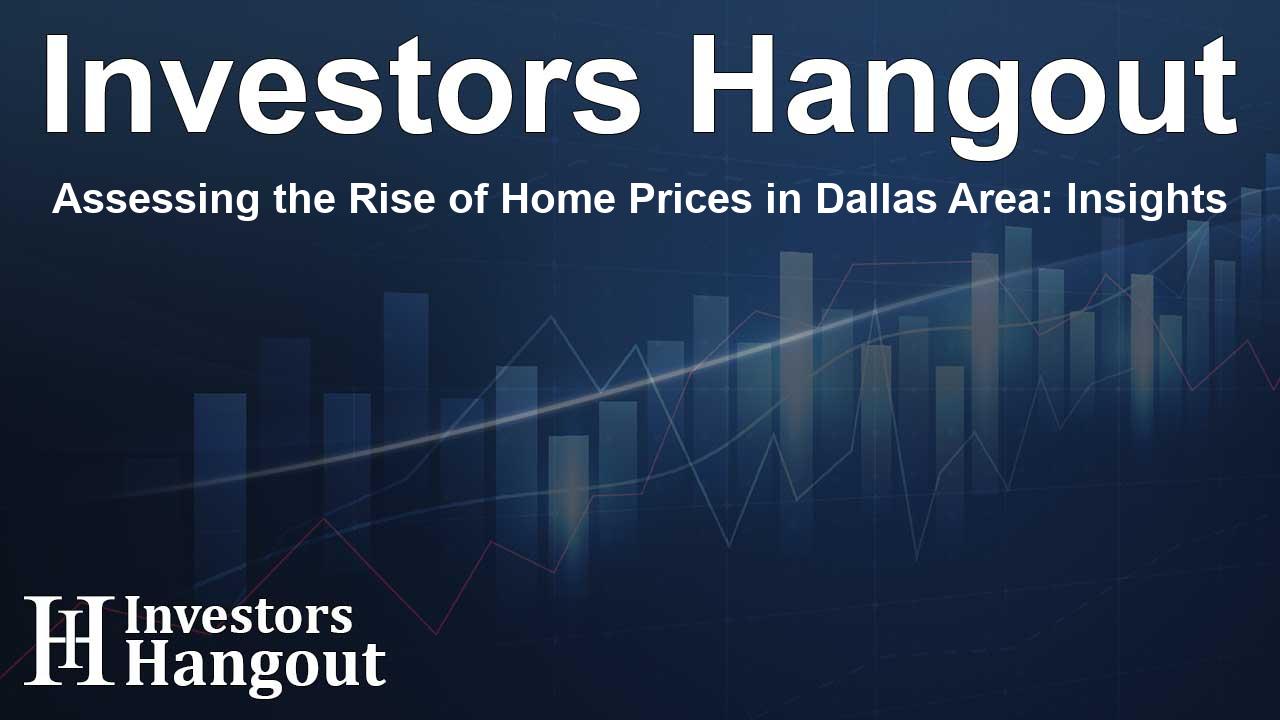Assessing the Rise of Home Prices in Dallas Area: Insights

Insightful Look into Home Price Trends in Dallas-Plano-Irving Area
As we delve into the dynamics of the real estate market, recent findings shed light on the Dallas-Plano-Irving metro area, where home prices have increased by 2.3% year-over-year. This analysis is backed by data from First American Data & Analytics, which closely monitors housing market fluctuations across the nation.
Understanding the Home Price Index (HPI)
The August report from First American reveals vital metrics regarding home price shifts. It reflects price changes observed in real time across various metropolitan areas, capturing details that influence buyer behaviors and market dynamics. The Home Price Index (HPI) serves as an essential tool for potential buyers and investors looking to navigate the current landscape.
Monthly and Yearly Comparisons
When examining the metrics, it is evident that from July to August 2024, the Dallas-Plano-Irving HPI experienced a month-over-month increase of 0.6%. In a broader context, the year-over-year growth of 2.3% illustrates a resilient housing market, showcasing a steady demand despite the rising costs.
Comparative National Insights
Nationally, the HPI showed a modest month-over-month increase of 0.1%, signaling that while home prices are climbing in some regions, the national average is exhibiting slower growth. This difference emphasizes the unique position of the Dallas area in the real estate landscape.
Market Analysis and Economic Factors
Mark Fleming, Chief Economist at First American, provided commentary on these trends, noting the ongoing pressure from elevated mortgage rates and high property prices that continues to challenge potential buyers. However, the increase in inventory could potentially lead to a more balanced market over time.
A Closer Look at Price Tiers
The analysis of home price tiers reveals insights specific to the Dallas-Plano-Irving area. The market is segmented into three categories: starter, mid-tier, and luxury homes. This segmentation is particularly insightful for first-time buyers who often face significant affordability challenges.
Highlights from the Price Tier Analysis
According to the HPI data, starter and mid-tier homes both saw an appreciation of 1.6%, while the luxury tier experienced a more pronounced increase of 4.5%. This trend indicates a competitive market across all segments, particularly favoring higher-priced properties.
Future Trends in the Housing Market
Looking ahead, the critical question remains whether decreasing mortgage rates will influence buyer activity significantly. As many homeowners are locked into low-rate mortgages, the introduction of slightly lower rates may not yield an immediate surge in the market. Traditional buyers are often sellers, creating a complex environment influenced by various economic factors.
Year-Over-Year Growth in Different Areas
While analyzing specific areas, it's worth noting that the demand for affordable starter homes appears to be holding steady, with positive annual price growth reported in 25 of the top 30 markets. Locations that maintain affordability are finding favor particularly among first-time homebuyers.
Conclusion: The Dallas-Plano-Irving Real Estate Landscape
In summary, the Dallas-Plano-Irving area has shown notable resilience in its housing market, characterized by consistent price growth despite challenges. With an evolving economic landscape and shifting buyer profiles, adaptive strategies will be critical for stakeholders in the real estate sector.
Frequently Asked Questions
What is the current trend in home prices in the Dallas-Plano-Irving area?
The Dallas-Plano-Irving area has experienced a 2.3% increase in home prices year-over-year, indicating a stable market.
How does the Home Price Index (HPI) reflect market conditions?
The HPI tracks home price changes over time, providing insights that help buyers and sellers navigate the real estate landscape.
What factors are currently influencing housing demand?
Elevated mortgage rates and high property prices are primary factors straining housing demand, alongside an increase in available inventory.
Are starter homes still in demand despite rising prices?
Yes, starter homes are still sought after, showing positive price growth in numerous markets, which reflects their demand among first-time buyers.
What is the outlook for the future of home prices in this region?
The outlook remains cautious as potential shifts in mortgage rates could influence buyer activity, but overall growth trends show resilience in the market.
About Investors Hangout
Investors Hangout is a leading online stock forum for financial discussion and learning, offering a wide range of free tools and resources. It draws in traders of all levels, who exchange market knowledge, investigate trading tactics, and keep an eye on industry developments in real time. Featuring financial articles, stock message boards, quotes, charts, company profiles, and live news updates. Through cooperative learning and a wealth of informational resources, it helps users from novices creating their first portfolios to experts honing their techniques. Join Investors Hangout today: https://investorshangout.com/
Disclaimer: The content of this article is solely for general informational purposes only; it does not represent legal, financial, or investment advice. Investors Hangout does not offer financial advice; the author is not a licensed financial advisor. Consult a qualified advisor before making any financial or investment decisions based on this article. The author's interpretation of publicly available data shapes the opinions presented here; as a result, they should not be taken as advice to purchase, sell, or hold any securities mentioned or any other investments. The author does not guarantee the accuracy, completeness, or timeliness of any material, providing it "as is." Information and market conditions may change; past performance is not indicative of future outcomes. If any of the material offered here is inaccurate, please contact us for corrections.